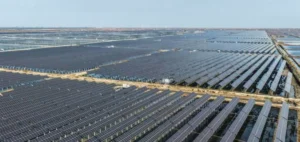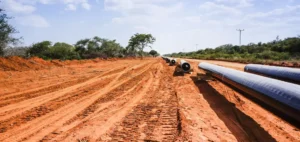India, faced with rising carbon emissions, is developing a new hydrogen and carbon market policy for 2023.
Decarbonization ambitions
In India, RK Singh, Minister of Power and New and Renewable Energy, says:
“This is a major step for our energy transition. This bill contains provisions for housing (decarbonization), the carbon market, and mandating the consumption of non-fossil sources.”
In introducing the bill to provide a legal framework for hydrogen, the Minister also addresses the decarbonization aspect of the country. Experts predict that emissions from coal combustion will increase until 2044.
Thus, iron and steel, cement, refineries and fertilizer producers are among the sectors that will be allocated emission allowances. They will be required to trade carbon credits on Indian power exchanges, according to government officials. New Delhi, however, was committed to an unambitious scenario to reach net zero by 2070.
In addition to the planned carbon market, India is developing a voluntary carbon market (VCM). It provides for the participation of a defined set of sectors trading credits in an offset mechanism. Indeed, ESG and climate factors are becoming crucial for companies committed to carbon neutrality.
On the other hand, the price of credits based on renewable energy in India is estimated at $3.50/mtCO2e in December 2022. India issued about 40 million MCV credits between early 2022 and October, or 20.2% of the global total. Minister of State Singh comments:
“We will use our carbon credits to achieve our own NDCs (nationally determined contribution under the Paris Agreements). Any surplus would be available for sale internationally.”
Renewable energy credits accounted for 95.3% of India’s total VCM credit issuance during the nine-month period. Manish Dabkara, CEO of Eki Energy Services and Chairman of the Carbon Markets Association Of India, states:
“Our association works closely with Indian policy makers and international stakeholders. Our goal is to propel Indian CVD exports to their peak. We further wish to successfully establish the domestic emissions trading system through Article 6 opportunities.”
However, the price of loans in December is down 10% month-on-month.
The second part of the Energy Conservation Act also sets mandatory renewable hydrogen consumption targets. The goal is to stimulate demand for the new fuel. A target of 5 million metric tons of renewable hydrogen production was a goal by 2030.
The development of hydrogen
Activity in the sector in India is expected to intensify next year. Indeed, new projects could double renewable hydrogen capacity. For example, investors like Reliance New Energy and Adani New Industries have been seeking partnerships since 2021.
Reliance New Energy says it will invest $10 billion over the next three years in new fuels. The goal would be to reach 100GW of renewable energy capacity by 2030. Adani New Industries is also looking to invest over $50 billion over the next ten years.
The company hopes to produce 1 million tons per year of renewable hydrogen before 2030. India has 54 renewable or low-carbon hydrogen projects. This represents 1.99 million tons of renewable hydrogen.
In comparison, Australia has 137 renewable hydrogen projects. This represents 9.84 million tons. In India, a Green Hydrogen Mission project proposes $3.69 billion for 2022-2030 to support the production sector.
New Delhi wants to implement hydrogen consumption obligations in certain sectors such as fertilizers or refining. 145.5 billion rupees would be available for an incentive program related to domestic electrolyzer manufacturing. Companies are most interested in learning about the financial support for renewable hydrogen production.
For example, Qatar’s alkaline electrolysis hydrogen (including investments) was valued at $2.59/kg on December 16. This represents an increase of 0.39% month over month. Japanese hydrogen produced by alkaline electrolysis (including CAPEX), amounts to $10.87/kg, a 15% increase month-on-month.






















